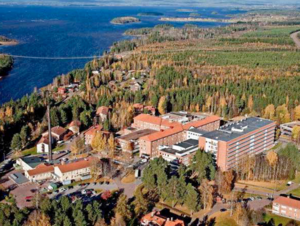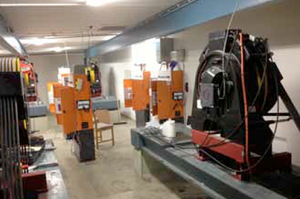Project Mora Hospital: Six lifts in traffic systems
Source: CAN Newsletter, Roger Wickmann, Hisselelektronik

Modernization of two passenger lifts and four bed/transport lifts in the main building of Mora Hospital was necessary in order to enhance accessibility, reliability and energy efficiency. This modernization included conversion with new gearless machines, including controllers, control cabinets and sensors, new automatic lift doors and shaft doors, new finishes, control panels, etc. All lifts had to stop at nine levels with a simple automatic door. The system is fitted with three-stage Blue modus (energy saving mode): Switching off/dimming lift lighting, switching off floor indicator, and energy saving mode “Save mode” for frequency control. The lifts are also equipped with: “Revcon” (feedback of excess power to the mains supply) and real-time energy metering with plain text in the display.
I/O from CANopen-Lift

External calls and priority lift calls are freely programmable and made directly via I/O on the floor display FD4-CAN. In this instance the following modes are operated:
- “Up call”,
- “Down call”,
- “Priority call 1: Emergency transport”, and
- “Priority call 2: Bed transport”.
Lift call and automatic door opening/closing functions are executed via I/O-8 cards; each card has eight combined inputs and outputs. These functions can be programmed to any task, either directly from a display on the control system or via the computerbased tool CANwizard.
Service mode
With lifts in larger groups, it may be difficult to get hold of exactly the lift that needs to be serviced. To resolve this problem, every lift was fitted with an input function, which places the lift in what is known as “Service mode”. When this input is activated, the lift leaves the group system, serves all pending lift calls, before then moving to the service floor (programmable). The lift opens and closes the doors and then travels 2400 mm down (programmable). The lift is now in service mode.
EN 81-A3
UCM (unintended car movement) is - in accordance with EN 81-A3 - in control of involuntary lift movement and has been certified and approved by TÜV. Implemented test functions allow the inspection body to easily carry out the necessary tests for the lift to gain approval. The LX control cabinet is always equipped and prepared for EN 81-A3. In lift and external calls, the card reader unit signals pass directly into what is known as a CAP-01 card, which has eight combined inputs and outputs.
Monitoring

A computer with WinMOS300 for monitoring of the lifts has been placed in the engine room. It allows operating personnel to easily search for information and also has a 4G modem for remote connection. The software is capable of monitoring up to 100 lifts in the basic package, full access to errors, messages, weight, position, energy consumption; essentially, everything needed for diagnosis, programming, statistics and analysis of operating conditions.
Number of cable sections
Used in the lift cable:
- 230 V: 12
- 24 V: 2
- CANopen network 2
- Emergency telephone: 4
Used in the shaft stem:
- Tensile weight: 2
- Emergency stop: 2
- Door contacts: 2
- Emergency telephone: 4
- 24 V: 2
- CANopen-network: 2